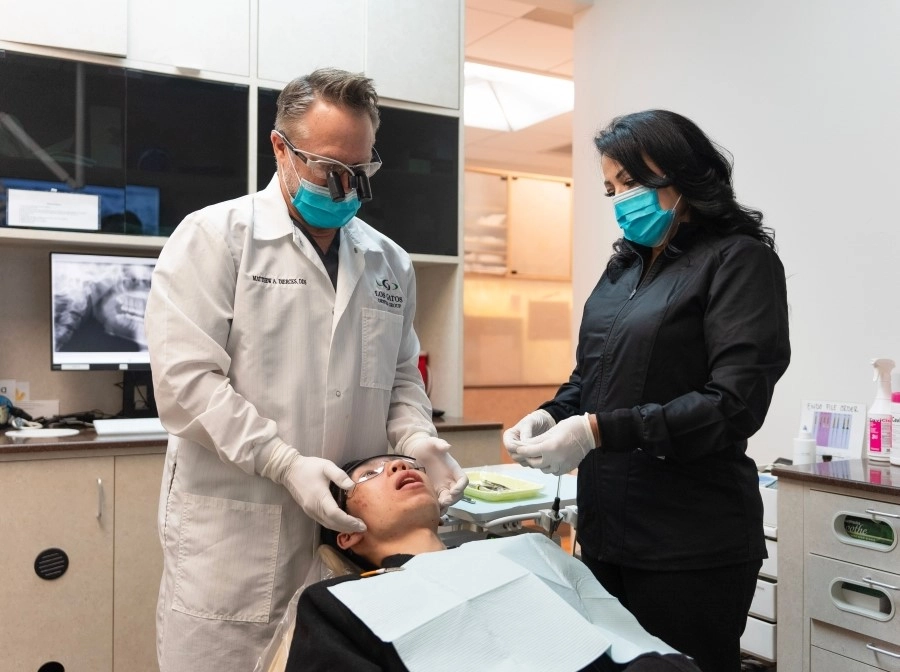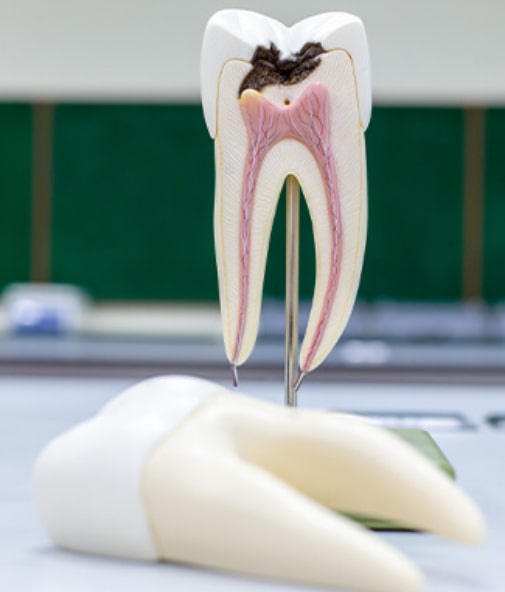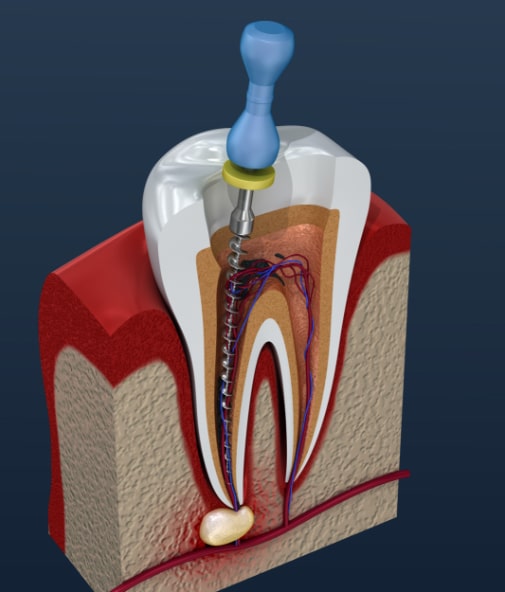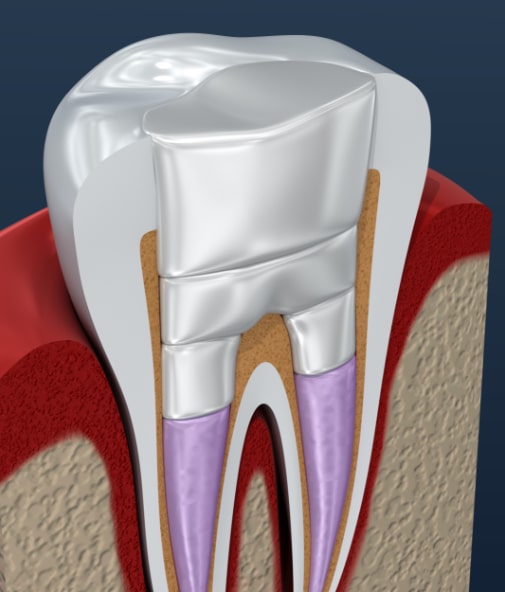Relieve Tooth Pain with Root Canal Therapy
Pain-Free Root Canal Therapy That Lasts
If you have a severely infected tooth that other treatments can't fix, you might think extraction is your only option. But there’s good news! At Los Gatos Dental Group, we offer root canal therapy to save your natural smile.
We understand that root canals can have a scary reputation. With gentle and professional care and our experienced dentists walking your smile journey with you, you’ll find near-instantaneous relief and a restored smile in no time.
Save Your Smile

Why Choose Los Gatos Dental Group for Root Canal Therapy?
- Dental Sedation Available
- Two Experienced Dentists
- Same-Day Emergency Dental Care
Why Are Root Canals Needed?

When a tooth is severely infected, root canal therapy offers a valuable solution: it saves your natural tooth. Inside every tooth is a hollow area called the pulp chamber, which houses the tooth’s nerves and blood vessels. Sometimes, this pulp becomes infected due to deep decay, trauma, or other factors like an infection.
A root canal procedure allows us to carefully remove the infected tissue inside this chamber, clean the area thoroughly, and then seal it to prevent further problems. And the best part? The relief and results are instantaneous, meaning you walk out our doors with not only a restored tooth, but peace of mind.
What are the benefits of saving your natural tooth?
- Prevents more complex treatment: Saving your natural tooth with a root canal can help you avoid more complex and costly procedures down the line.
- Maintains your natural smile: Keeping your natural tooth helps preserve your smile's appearance.
- Prevents teeth shifting: A missing tooth can cause surrounding teeth to shift, affecting your bite and smile.
- Relieves pain and discomfort: Root canal therapy can greatly reduce or eliminate the pain and discomfort associated with an infected tooth.
- Stops the spread of infection: By removing the infected tissue, a root canal prevents the infection from spreading to surrounding teeth and gums.
At Los Gatos Dental Group, we understand that root canals can seem daunting. We're here to provide gentle, effective treatment to relieve your pain and help you maintain a healthy smile. Give us a call to schedule your consultation today!
What to Expect During Your Root Canal Procedure

We want to make the root canal process as smooth and comfortable as possible. The first step is often the most relieving: we'll gently numb the area with a local anesthetic. This ensures you won't feel any pain during the procedure – just a bit of pressure. In fact, for most patients, any pain they’ve been experiencing leading up to this point is going to be a thing of the past. If you're currently experiencing any pain or discomfort, this will be your first step towards relief.
Here's what you can expect during the rest of your root canal procedure:
- Cleaning and shaping: Dr. Diercks or Dr. Karamardian will carefully access the inside of your tooth to remove any infected or damaged tissue. The area will then be thoroughly cleaned and shaped to get ready for the next step, ensuring you're infection-free and on the right path to having a restored tooth.
- Filling: The cleaned area will then be filled with a dental filling material to seal it off against anything getting back inside your tooth, and prevent any further problems.
- Sealing: Once your tooth has been filled, we'll ensure that the area is properly sealed, protecting your natural tooth from the inside for years to come.
If there is a large abscess present, you may be placed on antibiotics before the procedure to help prevent trapping any bacteria. In some cases, we may refer you to a root canal specialist, called an Endodontist. This might be necessary if there are unusual circumstances such as curved roots, extra roots, or extremely small canals. We'll take every step to ensure your comfort and provide the best possible care.
Caring for Your Restored Tooth

After your tooth has been treated with a root canal, it's important to protect and restore it with a dental crown. Because your tooth has been hollowed out to clean out any infection, it becomes more fragile and susceptible to fracturing when you bite down hard or tend to grind your teeth while you sleep. Dental fillings, inlays, and onlays, which only restore a portion of the tooth, aren’t sufficient for a tooth that's had a procedure done as extensive as a root canal. Dental crowns provide a strong, durable, and long-lasting protective layer for your entire restored tooth, giving you back all of the aesthetics as well as its function.
While it may not happen immediately, a tooth that has undergone a root canal without a crown is highly likely to develop a fracture eventually, and here at Los Gatos Dental Group, we're committed to providing professional care that stands the test of time! We understand that this might seem like an extra step, but it's a crucial investment in your oral health. With a beautifully restored smile and discomfort a thing of the past, we're confident you'll leave our friendly practice with a smile on your face.
If you’re seeking relief from dental pain and discomfort and want to save your natural smile, schedule an appointment online or give us a call, and we’d be happy to tend to you as soon as possible!